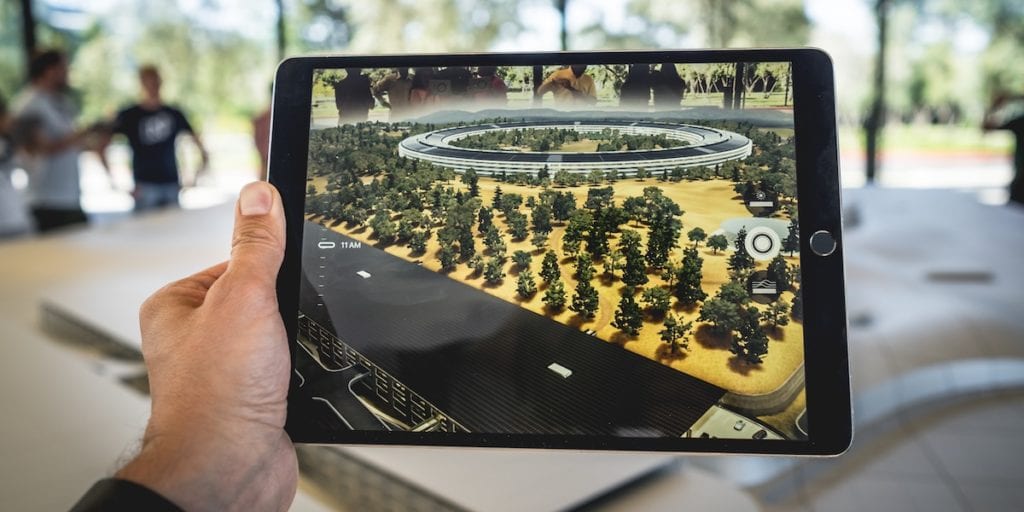With 2020 approaching, we’re sure to start seeing many “hindsight is 20/20” and “perfect vision” riffs as predictions of upcoming cultural and technological trends roll in. So why not take the opportunity to apply that same logic to digital user experience with some 2020 UX trends?

Of course, predicting how users will engage with digital systems in the near future is not a precise endeavor. As we know, technological developments, like cultural inclinations, can shift quickly. Trends we had predicted years ago are just now starting to become viable (AI and VR), whereas others haven’t delivered as expected (I’m looking at you, Google Glass).
Knowing that foresight is far less than 20/20, I nevertheless submit to you 5 UX trends for 2020, which seem to have general consensus among the online UX/UI community as being especially viable and important to our work as digital communicators and marketers.
1. More Interfaces in More Places
Ubiquity and Synchronization Across Devices and Touchpoints
With more and more devices being connected to the internet, users will come to expect a seamless integration among digital touchpoints. Instead of focusing primarily on desktop and mobile devices in a responsive manner, we will need to look to creating integrated experiences for a user’s comprehensive digital ecosystem, which could include:
- Wearables and watches
- Home appliances
- Exercise equipment
- Automobile dashboards
- Kiosks
- Large advertising screens
The list above is just a snapshot, as the range of potential connected devices is limitless. Consistency of information and presentation across these touchpoints will start to play a larger role in how we design for this synchronized experience. And we will need to think of the world as being a canvas for the digital experience, not just the device we have at hand.
2. Say What?
Voice Input and Control
Comscore predicts that 50 percent of internet search queries will be by voice in 2020. This of course has many implications for UX:
- Honing our designs so they are also engaging when delivered through voice and audio
- Identifying the proper level of information to surface for a voice query
- Planning for the most appropriate functions to be available through voice, and synchronizing these with the available experiences through traditional channels
- Interpreting and error checking queries for user intention
Voice assistants will continue to support a wider variety of user tasks, such as online purchases, reservations, event invitations, car rentals, etc. In the near future this array of supported functions will continue to grow and have greater support from robust AI (the next trend below). Where relevant, it’s time to start including voice-driven functions, in addition to traditional visual solutions, as part of a more comprehensive experience.
3. Robots Know What You Want
Artificial Intelligence and Machine Learning for Personalization
As AI becomes more sophisticated, user interactions with digital environments will become increasingly more personalized and conversational. Increased personalization is a key benefit of systems that interpret a wide variety of user inputs to predict and satisfy user needs and expectations. From a UX perspective, this is key to designing systems that are not always all things to all users, but instead flexible to the individual, with components and content driven by observed behavior and available user data, such as:
- Location & environment
- Purchase behavior
- Online communities and tribes
- Occasions, time and events
- Personal calendar
We will need to think beyond the static page and tap into AI personalization opportunities as much as possible to supply variable content where appropriate.
User interactions with an AI system are becoming increasingly more conversational with natural language. For example, the trend for online help and assistance is moving to very robust chatbots that parse full sentence queries to deliver results and outcomes that not only feel more “human” but anticipate user needs beyond the initial query itself.
4. It’s Right There in Front of You
Augmented and Virtual Reality Environments
According to the Gartner survey in 2018, about 46 percent of retailers plan to integrate AR/VR technology into their shopping experience in 2020. AR and VR have been buzzword trends for a few years now, and the potential application of this technology for user engagement is widening beyond niche games and entertainment. The opportunity we have with AR and VR in the short term is to look for ways to leverage the technology, especially augmented reality, to merge elements of the real world with those of the virtual and digital experience. Some examples that are already available include:
- Scanning products for information and price
- Identifying names and specifications of objects in real world
- Mapping and location information by pointing your camera at streets and landmarks
- Translating signs into different languages
- Overlaying new interior or landscape designs on existing spaces
Also with AR and VR will come more user input gestures to accommodate with our designs, and it will be our job is to make sure these are appropriate to the experience at hand. It’s important to keep in mind that AR and VR should be used in the service of a function that is not already served with more conventional digital paradigms, or is also used to enhance the speed or quality of that function. For example, just because a user can wave a hand in front of their face to access the menu features of a VR experience, doesn’t mean that this may be better than pushing a button that is already available on a traditional interface instead.
5. Content Has to Work Even Harder
Content Flexibility
Content will continue to be the primary driver for engagement as new delivery methods are introduced to a user’s digital ecosystem. Thus, it will be increasingly important to create and design this content in as flexible a manner as possible. For example, the same content may be delivered through voice, across both sides of a foldable smartphone screen, or as a modal pop-up window on a smart TV. With this in mind, UX should continue to focus first on serving the communication needs of the content, and then on the potential delivery formats where the user will engage with this content. In many cases, this will mean breaking up content into digestible components so that they may more easily be delivered in a variety of ways.
Our attention spans are decreasing. Therefore, integrating content into a comprehensive experience may be better than offering an unstructured set of discrete components for a user to explore on their own. This is especially important for rich media and video. A related trend here is that long, standalone videos or deep interactive elements that may work well for when a user is already engaged, may not work as well for other types of experiences that require significant exploration. We will see more integrated video snippets and animations alongside other content elements in the near future, as another dimension of a complete delivery of the experience.



